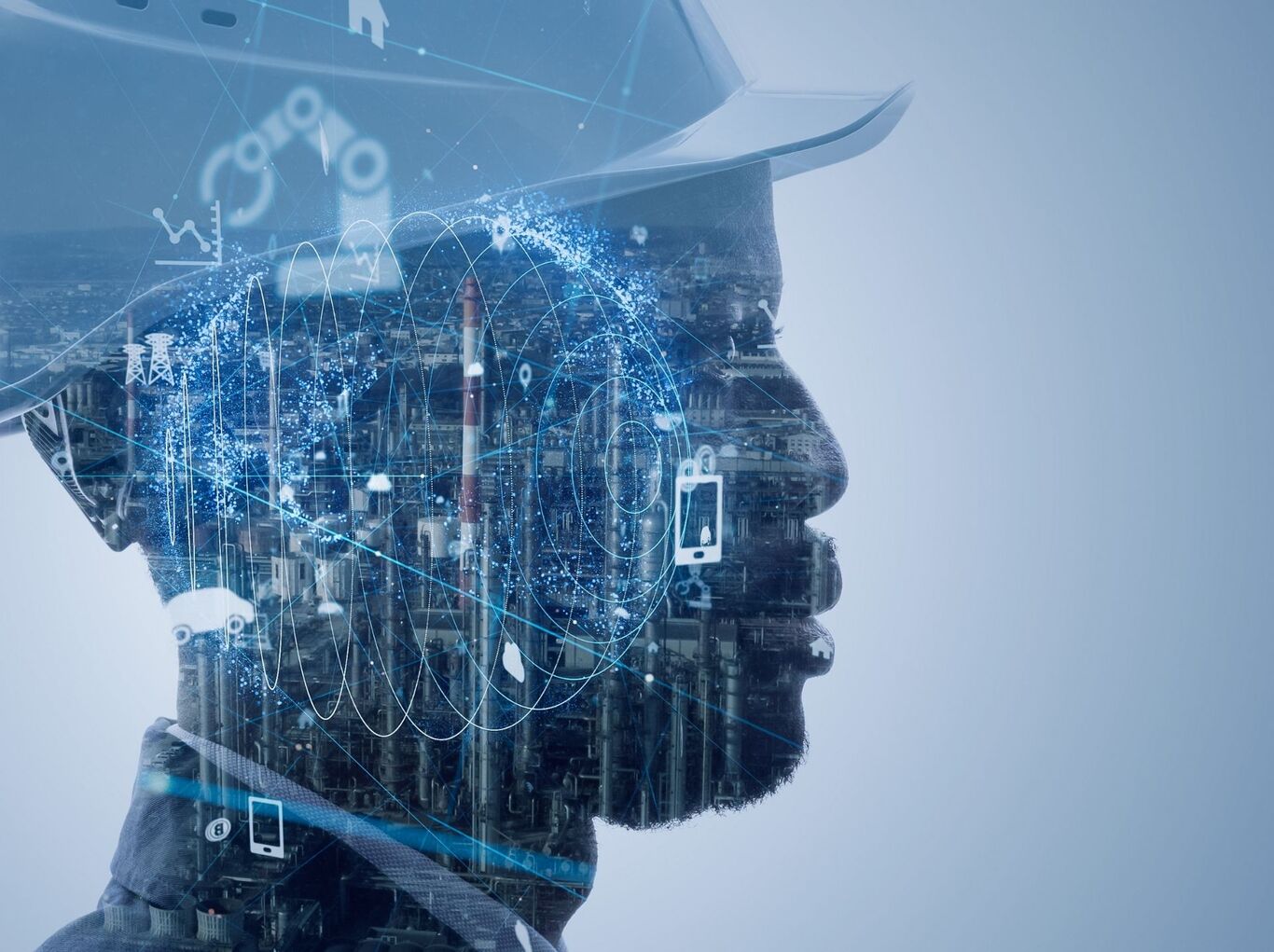The Future of Software Platforms in Business Technology

In the ever-evolving software development industry, innovation is constant. Every year, new programming languages and trends emerge in software architecture.
Advanced software platforms are now helping businesses predict their next business move. AI, cloud computing, and cybersecurity are changing how businesses interact with customers. By keeping up with these trends, companies can develop products that meet their current business needs in a better way.
This article will discover the latest software products and tech trends. We will also discuss the future of software platforms in business technology.
Top 8 Tech Trends in Software Development
Businesses can improve their operations by integrating AI, blockchain, and edge computing. These software products and solutions help improve efficiency, security, and user experience.
They help automate processes, improve data security, and provide real-time insights. Let us look at some emerging software platform trends businesses can adapt to.
1. AI and ML
AI and ML contribute to many business processes. Their services range from cloud services to complex projects. With the integration of AI, the future of software development looks promising. Many nations have already advanced and are competing to lead in AI technologies.
This technology will help robotics, healthcare, intelligent assistants, and finance. It will also advance travel, chatbots, language processing, marketing, and social media monitoring.
Impact on Business Operations
AI helps with project planning, problem analysis, and quality analysis. This enables developers to create innovative, reliable, and efficient software solutions. Integrating AI and ML into software development impacts businesses in the following ways:
- Faster development: Speeds up development with smart testing and automated coding.
- Better accuracy: Analyses large data sets to improve code quality and decision-making.
- Cost Efficiency: Automates routine tasks to cut down on development and maintenance costs.
- Scalability: AI ensures that the software can manage more data and users as your business grows.
- Continuous improvement: ML models update the software by learning from new data.
2. OpenAI
Advanced tools like GPT-5 and Codex help generate code from simple descriptions. This makes development faster and easier. They are also good at reviewing errors and suggesting improvements.
Developers can use natural language to interact with software systems and simplify tasks. OpenAI's technology helps to translate code between languages. This then facilitates creating prototypes faster, generating documents, and fixing bugs.
Impact on Business Operations
The AI market grew to over $184 billion in 2024[1], marking a $50 billion[2] rise since 2023. This rapid growth will reach $826 billion by 2030.
Developing an OpenAI application can greatly improve customer interactions. It also impacts business operations in the following ways:
- Improves efficiency: Automates routine tasks to save time and reduce any errors.
- Personalises experiences: Interfaces that adapt to user preferences for a more engaging experience.
- Problem-solving: Uses AI-driven analytics to tackle any challenging issues and make informed decisions.
- Competitive advantage: Utilises cutting-edge technology to stay ahead in the fast-moving market.
3. Human Augmentation
Human augmentation involves using technology to improve human abilities. This further helps in improving various industries. Improved senses, thinking, and physical skills help developers create better, more efficient software.
Human augmentation requires a proper understanding of user needs and ethical issues. For that, advanced technology integration is needed to provide responsible enhancements.
Impact on Business Operations
Human augmentation technology is transforming business operations in ways like:
- Improve supply chain management: Devices with sensor and AR give real-time insights.
- Attract and retain employees: Innovative tools and resources improve employee satisfaction and retention.
- Competitive advantage: Advanced technologies offer superior quality products and services for competitive advantage.
Cloud Computing
Cloud computing involves accessing services such as storage and servers. It also helps with analytics, networks, and databases over the internet. It allows easy access to tech services without buying or maintaining physical servers.
Many organizations are transitioning to the cloud. Over over 80% are making this shift, and it's expected to surpass 90% by 2024. Amazon leads as the largest public cloud provider.
Impact on Business Operations
Cloud computing offers pay-as-you-go models, with which companies pay only for what they use. This helps in avoiding large upfront investments. Here are some ways in which the cloud impacts business operations:
- Improves collaboration: Teams can work together from anywhere, access files and applications. This improves project collaboration and information sharing.
- Increases productivity: 24/7 resource access enables faster decisions, streamlined workflows, and flexible work arrangements, boosting business performance.
- Better security: Offers strong security features like access controls and data encryption. This threat detection protects users from cyberattacks.
- Competitive advantage: Advanced technologies and resources give businesses a competitive advantage.
Cybersecurity
Cybersecurity aims to protect users against hackers and security breaches. Human error is often the reason behind data breaches. AI-integrated cybersecurity systems can detect and alert administrators to new threats faster.
With the rise of 5G technology, cybersecurity has become a necessity. Software product companies are investing more in security to ensure safety for the users.
Impact on Business Operations
Cybersecurity also protects users amidst the increasing dependence on the internet and digital tools for email and online meetings. Here’s more on how cybersecurity impacts and matters for your business:
-
Prevents cyberattacks: Cyber threats can damage your business. Effective security helps to safeguard your reputation and finances.
-
Adapts to advances: Dynamic security measures evolve to fight advanced cyber threats, protect data and ensure business continuity.
-
Advanced measures: Firewalls and antivirus software alone are no longer enough. You need up-to-date, comprehensive security strategies to tackle cyber threats.
-
Customised protection: Customised cybersecurity plan addresses all the risks for business. This reduces the chance of any attack.
The Internet of Things (IoT) Software Development
The Internet of Things connects devices and sensors to the Internet to collect and exchange data. You can further interpret this data and send information effectively. Edge computing processes this data closer to the source and improves efficiency.
Security is a major concern with IoT. However, encryption and device authentication protect the IoT ecosystems from cyber threats.
Impact on Business Operations
IoT improves business processes by collecting data in one place. It also enables smart decisions and streamlines operations. This leads to better quality, customised, cheaper products and faster turnaround times. Here are some more ways how IoT impacts business operations:
- Saves time and money: Predictive maintenance and data transfer help cut costs and simplify processes.
- Optimises supply chain: Tracks inventory in real-time, reduces excess stock, and improves logistics.
- Improves efficiency: Edge computing speeds up data processing and reduces cloud usage.
- Enables automation: Automates tasks like irrigation adjustments to improve service and reduce work.
- Improves customer experience: Offers personalised services through smart devices and wearables.
- Provides flexibility: IoT can adapt to your business needs by adding or integrating devices.
- Better decisions: It provides insights into operations and market trends for more informed decision making.
- Offers environmental sustainability: IoT optimises resource utilisation, cutting energy use, minimising waste, and lowering carbon emissions.
Predictive Analytics
Predictive analytics is gaining popularity because of more accessible data. This is because the decision-makers are now prioritising data-driven insights. It uses past and current data with algorithms and machine learning models. This helps in predicting trends, behaviors, and future possibilities.
Big data analysts use it to integrate and manage data and deploy machine learning models. They also use it to feature engineering, training models, and scaling operations.
Impact on Business Operations
Predictive analytics helps with accurate recommendations, supply chain forecasts, and healthcare diagnostics. It also predicts e-commerce churn and assesses financial risks.
Here’s how it impacts business operations:
- Forecast future trends: By using historical data patterns, it helps businesses predict future trends for better decision-making.
- Identify risks early: Through real-time data monitoring, it detects potential risks for proactive risk management.
- Gain strategic insights: Combining internal data with market information provides insights for adapting to market changes.
- Improve customer engagement: Customer behavior analytics helps forecast consumer behavior and identify cross-sell opportunities.
- Optimise operations: Forecasts inventory needs and manages resources by using demand forecasting models.
Virtual and Augmented Reality (VR/AR) Revolution
VR and AR are popular trends, especially among gamers for interactive experiences. These technologies are attracting consumers, investors, and industries.
This trend impacts healthcare, retail, media, entertainment, automotive, defense, aerospace, and transportation. With the rise of mobile devices and internet usage, VR and AR will also grow in mobile gaming and apps.
Impact on Business Operations
Analysts predict exponential market growth for VR and AR in the business world. The revenues will reach $170 billion by 2025, growing at an annual rate of 48%. Here’s how it impacts business operations:
- Reduces costs: Saves on travel expenses with virtual meetings, conferences, and training.
- Supports sustainability: Virtual conferencing cuts carbon footprint by 94% and energy use by 90%.
- Creates impactful presentations: AR and VR display products in engaging 3D virtual showrooms.
- Improves team connectivity: Lifelike virtual collaboration builds deeper connections, boosts creativity, bringing teams together.
- Increases accessibility: Immersive interfaces increase user engagement, making business interactions more intuitive.
- Innovates marketing: Designs interactive and immersive marketing campaigns to capture audience attention and increase conversion rates.
Wrapping Up
Business technology trends are evolving the software platforms. AI, cloud computing, cybersecurity, IoT, and XR are changing the way businesses operate. These technologies are important for companies to innovate and meet customer demands.
With GrowthJockey, learn more about how new software products will impact rapid business technology trends. Our team excels in AI, machine learning, software development, and AR. We use these technologies to empower businesses with innovative solutions. This further helps in improving customer experiences and business growth.
Contact GrowthJockey to see how our expertise can make you stand out from all your competitors.
FAQs
1. What are the future trends in cloud computing?
Organizations are shifting to cloud solutions for storage, data security, and service access. Cloud trends improve user experiences and business operations. Here are the future trends of cloud computing:
- AI and ML
- Data Security
- Multi and Hybrid Cloud Deployment
- Low Code and No Code Cloud Solutions
- Edge Computing
- IoT
- Kubernetes and Docker
- Serverless Architecture
- DevSecOps
- Disaster Recovery and Backup
2. Will AI replace programmers?
AI will not replace programmers, but it will change their roles. AI can automate repetitive tasks and help with coding. But human creativity and problem-solving are still essential. Programmers can focus more on designing complex systems. They can also use AI tools to improve their work.
3. How is GrowthJockey helping businesses in advancing their business technology?
GrowthJockey has expertise in AI, cloud computing, machine learning, and digital advertising trends. We provide innovative tech solutions that deliver measurable results. Our skilled team helps businesses stay competitive and adapt to new technologies.








